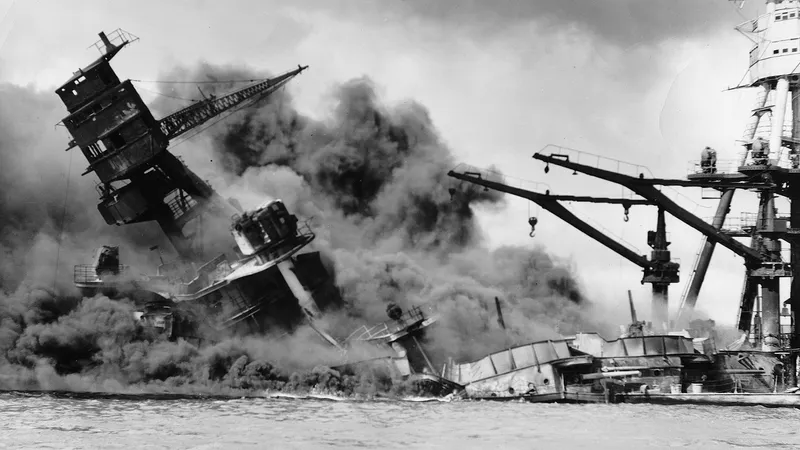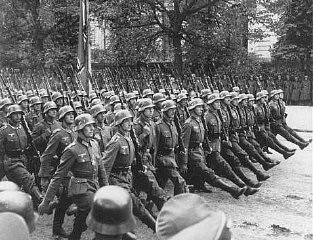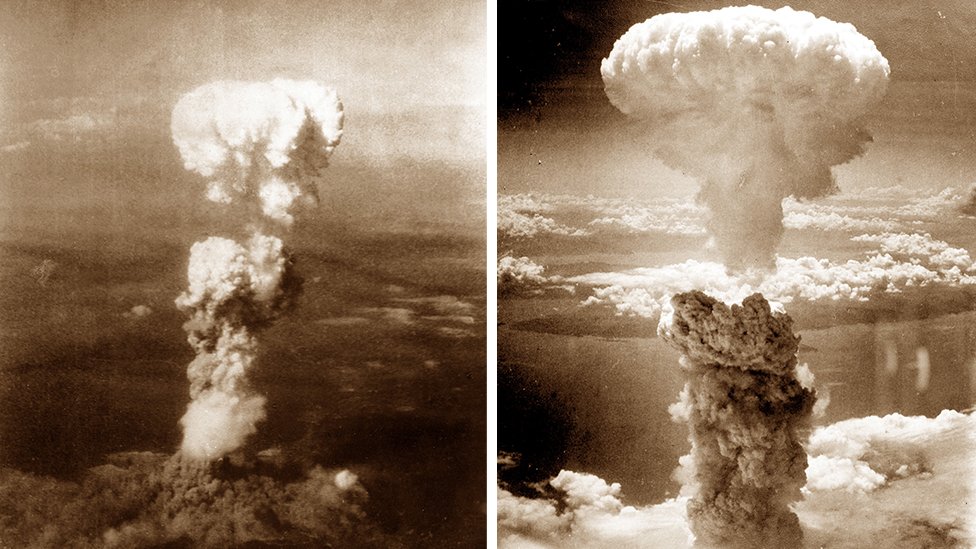D-Day
Thesis Statement
On June 6, 1944, The US Army landed on the shores of Normandy, France and fought the Nazi army to reduce Germany’s power. D-Day was a significant turning point in World War 2. Because of the US’s involvement in World War 2, it had a responsibility to remove Germany’s control over France and to protect the French’s rights.
Before D-Day
Bombing of Pearl Harbor
On December 7, 1941, Japan attacked the United States Naval base at Oahu, Hawaii. The attack, commanded by Chūichi Nagumowas and was done with 353 fighters, level and dive bombers, and torpedo bombers in two waves launched from six aircraft carriers. It started at 7:48 in the morning. The United States was not involved in the war at the time, however being bombed by Japan made it the United States responsibility to join the war.

Poland Invasion
On September 1, 1939, Germany started an Invasion of Poland, which marked the beginning of World War 2. The goal of the invasion was to divide Polish territory. The invasion concluded on October 6, 1939 with Germany and the Soviet Union dividing and annexing Poland under the German–Soviet Frontier Treaty.

Order of the Day
Shortly after France fell to the axis powers, General Dwight D. Eisenhower began planning a large-scale invasion of the German territories. By May, 1944, around 130,000 troops were amassed. 4000 ships and 1200 planes were also prepared. Since the Germans had strong ground defenses, planes were extremely important in the invasion. June 6th, 1944 was the final decision for the date of the invasion.

D-Day
During the morning of June 6th, 1944, 24,000 allied troops landed at Normandy, France under heavy gunfire. The 50 mile target consisted of 5 areas. Utah, Omaha, Gold, Juno, and Sword, with Omaha being the most deadly due to the high cliffs and wind speeds. The shore was mined and covered with barbed wire, making it difficult to clear the beaches.
Several fortified towns were cleared at Juno, Gold, and Sword. Two major gun emplacements were disabled at Gold. On the first day of the invasion, Allies were able to establish beachheads at Utah, Omaha, Gold, Juno and Sword on the first day of the invasion, however the Germans still had Carentan, Saint-Lo, Bayeux, and Caen. Caen was captured on July 21. The estimated German injuries on D-Day are approximately 4,000 to 9,000 soldiers with allied injuries at least 10,000 and 4,000 deaths.
After D-Day
Germany and Italy surrender
The D-Day Invasion was the event that caused the Allied forces to start winning World War 2. Italy was the first to surrender, due to the invasion of Sicily in July of 1943. Mussolini was arrested and placed under custody by King Victor Emmanuel. The new Italian government signed an armistice with the Allied forces on September 8, 1943.
Germany continued fighting until May 7, 1945. General Alfred Jodi of Germany signed 3 surrender documents for Great Britain, Russia, and France in the morning. A meeting was held at Supreme Headquarters, Allied Expeditionary Force in northeastern France. Representatives of France, Great Britain, Soviet Union, and the United States were there. Three German officers were there. General Alfred Jodi was the one who was authorized to sign the surrender documents.
Bombing of Hiroshima and Nagasaki
During the morning of August 6, 1945, The United States made the controversial decision to drop the first atomic bomb over Hiroshima, Japan. Between 80,000-160,000 civilians were killed. Even under near-impossible odds of Japan winning the war at this point, Japan kept fighting. On August 9, 1945, The United States dropped a second atomic bomb over Nagasaki. Between 60,000-80,000 civilians were killed. This was followed with Japan surrendering on September 2, 1945.

Long Term Aftermath
D-Day was the longest single battle in history and World War 2. Decisions made during D-Day still affect the world today. The Space Race and Cold War were the outcome of access to such powerful technology. Most of today’s technologies would not exist without the Space Race. The National Atlantic Treaty Organization, or NATO for short, was formed with the responsibility to protect the rights of humans and prevent future wars of such large scale.
Annotated Bibliography
Primary Sources
Secondary Sources



